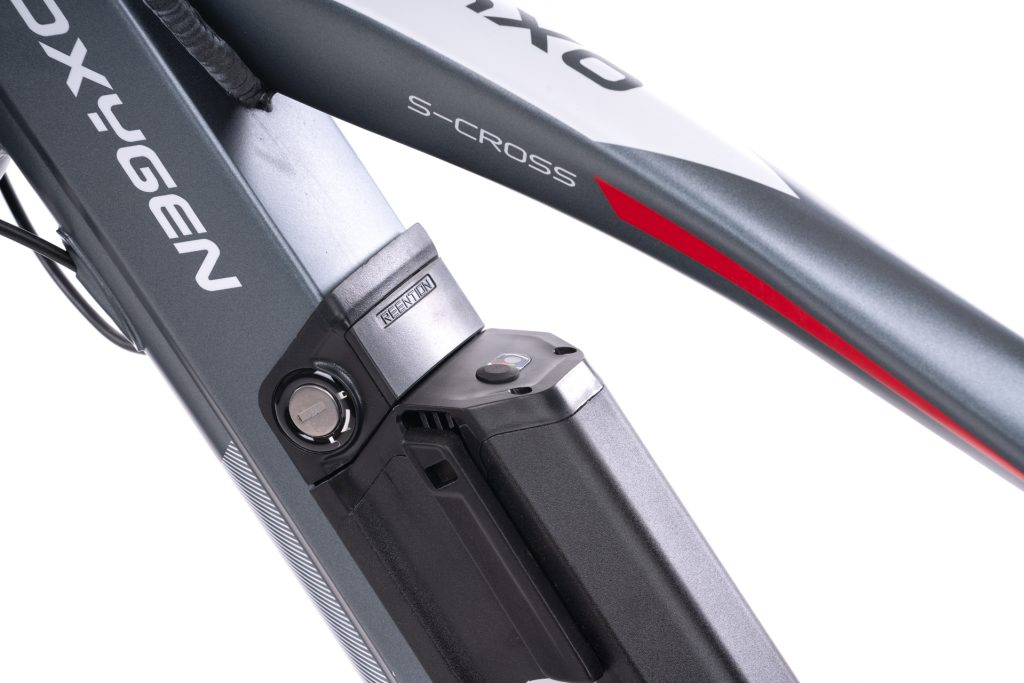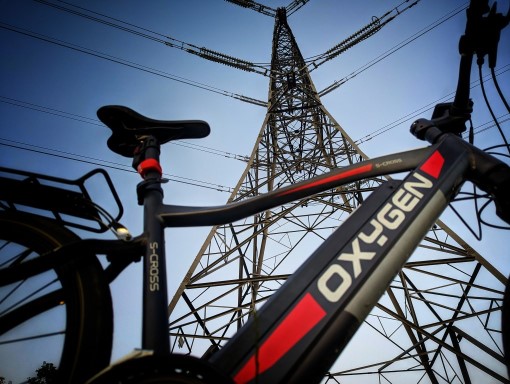There have been many reports in the press recently about eBike fires, which is of course concerning for those who own and use eBikes. Oxygen would like to reassure our current and future customers and put you in the picture: safety, why these fires occur and how you can minimise risk.
Lithium-ion batteries and cells are found in billions of consumer devices, from tiny units that power wearable devices, to enormous banks that we see in electric cars. The majority of fires that are reported with eBikes are due to poor quality products and/or user error, and a growing number are due to eBike conversion kits. It is very easy to buy cheap eBikes and parts online that are not only illegal to use on our road systems without a license and insurance (if the top speed is not limited to 15.5mph, and power at 250w), but have only undergone the minimum of safety tests (if any).

Inferior products
It is paramount that every component of the electrical system is designed and manufactured to handle the demands of an eBike. Poor quality eBikes and components may have the following issues:
– Cells: the individual cells that make up the battery are often recycled from used batteries and even in a ‘new’ battery may be faulty or low on maximum capacity and voltage.
– Battery Management System (BMS): this little computer lives inside the battery and ensures the battery and its cells cannot be over or under charged/discharged or, and are balanced. Cheap or counterfeit batteries may not have any BMS at all, and if present, may not do the job it is supposed to.
– Construction: the banks of cells inside the case may not be properly secured or joined, with poor quality wires, fuses and connectors which increases the risk of short circuit. The casings may also not be able to withstand shock or minor impacts or dissipate heat that occurs in normal usage.
– Chargers: cheap chargers may not even have a fuse and may not stop charging when they should – this can to dangerously overcharged cells that can explode.
User error
Whilst components and safety mechanisms can fail in sub standard products, a growing number of fires are due to the user. With eBike conversion kits, whilst many are sold by reputable dealers and are of high quality, many are also fitted incorrectly – there have been cases of users drilling straight through the battery in order to mount it. Improper use includes:
– Modification: using the battery for purposes other than it was intended; replacing internal parts (such as incorrect fuses), modifying connectors.
– Damage: submerging in water for a prolonged length of time, damage outside what is expected from normal use, attempts to mount a battery in a way that is not intended.
– Chargers: using a charger that is not for the battery IE a 48V charger with a 36V battery, or charging the battery in an unsuitable environment.*

Our products
In our current range of bikes, our batteries and chargers have been certified/tested to a number of different requirements, including CE, UN 38.3 and TUV (dependant on model). We shall be making these documents available shortly, and will be supplied upon request.
Best practice
Despite the safety of our products, they require care – this not only makes them even safer to use, it extends the life of the product.
– Storage: the battery should be stored in a cool, dry place (not less than 10c), be charged before storage, and then charged for at least two hours every two months (preferably every month).
– Charging: do not switch the charger on until the battery is connected. Place both the battery and charger on a hard surface and away from other objects, and in a cool, well-ventilated area, and out of direct sunlight. Once the battery is charged, turn off the power to the charger, then disconnect. ONLY USE THE ORIGINAL CHARGER! This is CRITICAL! It is normal for the charger to get warm during charging.
– Installation: ensure that all contacts are dry and free from corrosion and install into the frame as per the instructions. Ensure that the battery is installed correctly and lock the mechanism. Test to make sure the battery cannot be removed once locked.
– Use: weather extremes can affect the performance of the battery. If riding in sub-zero temperatures, do not pause your ride for more than ten minutes. In extremely hot conditions the thermal management may shut the battery down if it gets too hot.
– Lifetime: Like all components, a lithium-ion battery does have a finite life span. Over time the capacity of the battery will drop and it will eventually need replacing. It is important the old battery is disposed of safely – they will need taking to a hazardous waste collection site or specialist recycling centre.
Conclusion
An Oxygen electric bike will provide you with many years of safe use if regularly serviced and maintained, and our instructions and guidance followed. Even outside your warranty period, we are happy to assist and offer a number of services including battery refurbishment. Please contact us for more info.
* The voltage of our batteries on our current S-CROSS and GO! range is rated at 36V. So why are the chargers rated at 42V? 36V is the nominal voltage of the battery pack – the maximum voltage when fully charged is 42V. As stated earlier, it is important to only use our chargers with our batteries.

Thankyou. Two questions, is it ok to do a partial charge for say an hour or so if you don’t have time to do a full one, and what is the maximum water/river depth the bike (s-cross) can go through safely regarding the battery?